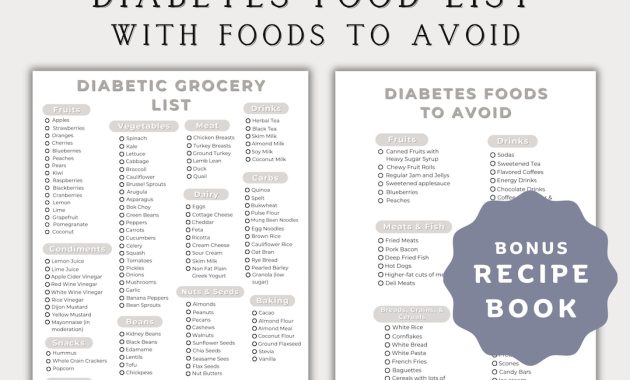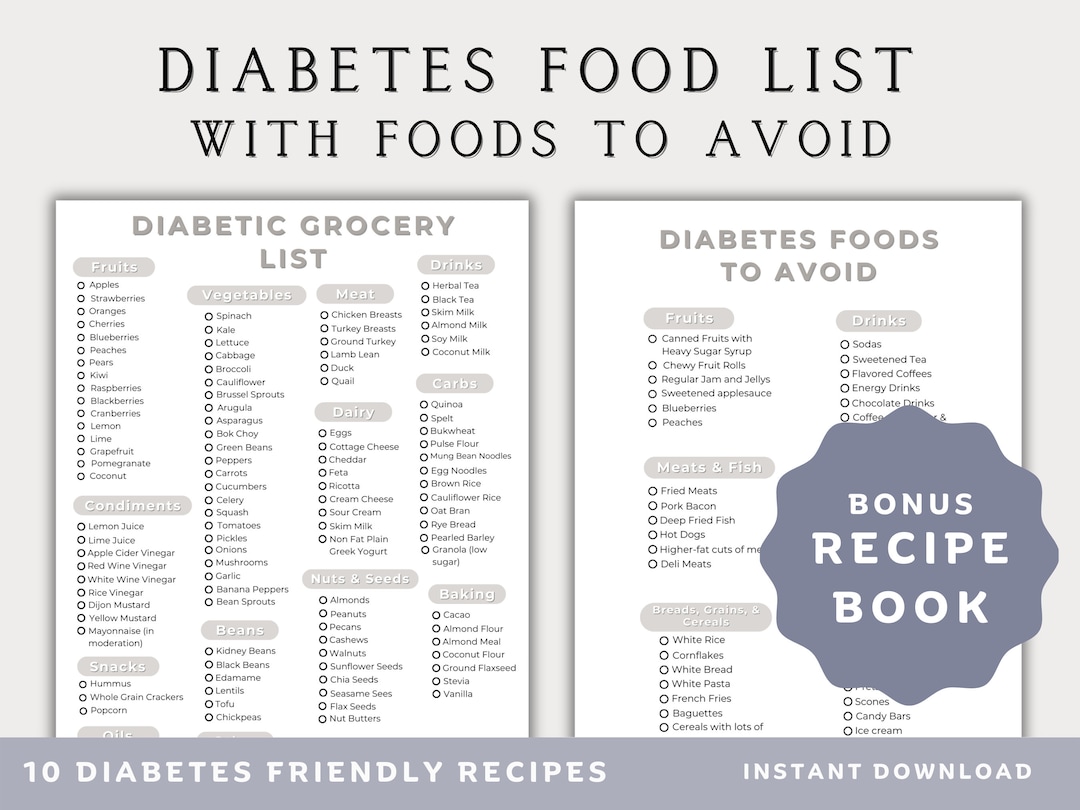
Diabet Smart Grocery List: Navigating the Supermarket with Confidence
Living with diabetes requires vigilance, especially when it comes to food. Making smart choices at the grocery store is crucial for managing blood sugar levels and overall health. This article provides a comprehensive Diabet Smart Grocery List to help you navigate the aisles with confidence. We will explore essential food groups, practical shopping tips, and strategies for making informed decisions. This Diabet Smart Grocery List is your ally in the journey towards better health.
Understanding the Importance of a Diabet Smart Grocery List
Diabetes management is a multifaceted endeavor. Diet plays a pivotal role in controlling blood glucose levels. The foods you choose directly impact your well-being. A well-structured Diabet Smart Grocery List becomes an indispensable tool. It empowers you to make informed decisions, avoid unhealthy temptations, and maintain a balanced diet. This proactive approach is key to preventing complications associated with diabetes.
Building Your Diabet Smart Grocery List: Key Food Groups
Non-Starchy Vegetables: The Foundation
Non-starchy vegetables are low in carbohydrates and high in fiber, vitamins, and minerals. They form the cornerstone of a diabetes-friendly diet. Include a variety of colorful options. Examples include:
- Leafy greens (spinach, kale, lettuce)
- Broccoli, cauliflower, and Brussels sprouts
- Bell peppers (various colors)
- Tomatoes and cucumbers
- Asparagus and green beans
These vegetables provide essential nutrients without significantly raising blood sugar levels. They also contribute to a feeling of fullness, aiding in weight management.
Lean Proteins: Building Blocks for Health
Protein helps stabilize blood sugar and promotes satiety. Choose lean protein sources to support your health. Consider these options for your Diabet Smart Grocery List:
- Chicken breast and turkey breast (skinless)
- Fish (salmon, tuna, cod)
- Lean cuts of beef and pork
- Eggs
- Tofu and tempeh
- Beans and lentils
Protein-rich foods help repair and build tissues. They also contribute to the overall feeling of fullness. This can help you manage your food intake.
Healthy Fats: Essential for Well-being
Healthy fats are important for various bodily functions. They also help you feel satisfied after meals. Include these sources of healthy fats in your Diabet Smart Grocery List:
- Avocados
- Nuts and seeds (almonds, walnuts, chia seeds, flax seeds)
- Olive oil and avocado oil
These fats provide essential fatty acids. They also contribute to the absorption of fat-soluble vitamins. Moderation is key when consuming fats.
Whole Grains: Carbohydrate Choices
Choose whole grains over refined grains. Whole grains have more fiber. Fiber slows down the absorption of glucose. This helps to prevent blood sugar spikes. Add these to your Diabet Smart Grocery List:
- Oats (rolled oats, steel-cut oats)
- Quinoa
- Brown rice
- Whole-wheat bread and pasta (in moderation)
Whole grains provide sustained energy release. They also offer valuable nutrients.
Dairy and Dairy Alternatives: Calcium and More
Dairy products provide calcium. They also provide other essential nutrients. Choose low-fat or fat-free options to manage calorie intake. Add these to your Diabet Smart Grocery List:
- Plain yogurt (Greek yogurt is a good choice)
- Unsweetened almond milk or soy milk
- Low-fat milk
These choices help maintain bone health and overall well-being. Be mindful of added sugars in flavored yogurt.
Fruits: Natural Sweetness in Moderation
Fruits provide vitamins, minerals, and fiber. They also add natural sweetness to your diet. Choose fruits with a lower glycemic index. Be mindful of portion sizes. Include these on your Diabet Smart Grocery List:
- Berries (strawberries, blueberries, raspberries)
- Apples and pears
- Citrus fruits (oranges, grapefruits)
Enjoy fruits in moderation. They can contribute to overall health. They can also help satisfy sweet cravings.
Crafting Your Personalized Diabet Smart Grocery List
Create a personalized Diabet Smart Grocery List that meets your specific needs. Consider your individual dietary requirements. Also, think about your preferences and lifestyle. Use the following steps to build your list:
- Consult with a Healthcare Professional: Discuss your dietary needs with your doctor or a registered dietitian. They can provide personalized recommendations.
- Plan Your Meals: Plan your meals for the week. This helps you determine what ingredients you need.
- Review Recipes: Look at your favorite recipes. Identify the ingredients you need to purchase.
- Categorize Your List: Organize your list by food groups or grocery store sections. This will save you time while shopping.
- Check for Sales: Check for sales and coupons. This will help you save money.
A well-organized list streamlines your grocery shopping. It helps you stay on track with your dietary goals.
Shopping Smart: Practical Tips for the Grocery Store
Read Food Labels Carefully
Become a label reader. Pay close attention to serving sizes, carbohydrate content, and added sugars. Look for foods with low carbohydrate counts. Also, look for those with high fiber content. Avoid foods with excessive added sugars and unhealthy fats. This is a crucial aspect of using your Diabet Smart Grocery List effectively.
Shop the Perimeter of the Store
The perimeter of most grocery stores often features fresh produce, meats, and dairy. This is where you will find many of the healthiest options. Minimize your time in the center aisles. These aisles often contain processed foods. These can be high in sugar, sodium, and unhealthy fats.
Choose Whole Foods Over Processed Options
Prioritize whole, unprocessed foods. These are naturally lower in added sugars and sodium. They also provide more nutrients. Opt for fresh or frozen vegetables. Choose lean proteins and whole grains. Minimize your intake of processed snacks, sweets, and packaged meals.
Control Portion Sizes
Be mindful of portion sizes. Even healthy foods can contribute to weight gain if consumed in excess. Measure your food. Use smaller plates. This will help you control your portions. This is especially important when managing diabetes.
Plan for Snacks
Plan for healthy snacks to manage hunger between meals. Choose snacks that combine protein, fiber, and healthy fats. Examples include nuts, seeds, Greek yogurt, and vegetables with hummus. This helps keep your blood sugar levels stable throughout the day.
Additional Considerations for Your Diabet Smart Grocery List
Hydration: The Importance of Water
Drink plenty of water throughout the day. Water helps regulate blood sugar. It also supports overall health. Avoid sugary drinks. These can cause blood sugar spikes. Water is a healthy and essential beverage for people with diabetes.
Mindful Eating: Paying Attention to Your Body
Practice mindful eating. Pay attention to your body’s hunger and fullness cues. Eat slowly. Savor each bite. This will help you avoid overeating. It also improves your overall eating experience.
The Role of Fiber: A Key Nutrient
Fiber is your friend. It slows down glucose absorption. It also helps you feel full. Choose high-fiber foods. These include vegetables, fruits, and whole grains. Fiber is a critical component of a diabetes-friendly diet. It can help in blood sugar control.
Supplements: When to Consider Them
Discuss the use of supplements with your doctor. Some supplements may be beneficial for managing diabetes. These can include vitamin D and omega-3 fatty acids. Never replace medication with supplements. Always seek professional guidance.
Putting Your Diabet Smart Grocery List into Action
A Diabet Smart Grocery List is more than just a list. It is a tool. It is a guide to healthier living. Use it consistently. Combine it with a balanced diet. Combine it with regular physical activity. Combine it with medication, if prescribed. This approach will help you manage your diabetes. It will also improve your overall well-being.
Conclusion: Embrace a Healthier Future
Creating and using a Diabet Smart Grocery List is a proactive step. It is a step towards better health. Make informed choices. Stay consistent. This will help you manage your diabetes. You can also enjoy a fulfilling life. Remember to consult with healthcare professionals. They can provide personalized guidance. They can help you achieve your health goals. Embrace a healthier future. Start with your next grocery trip.
[See also: Related Article Titles]

